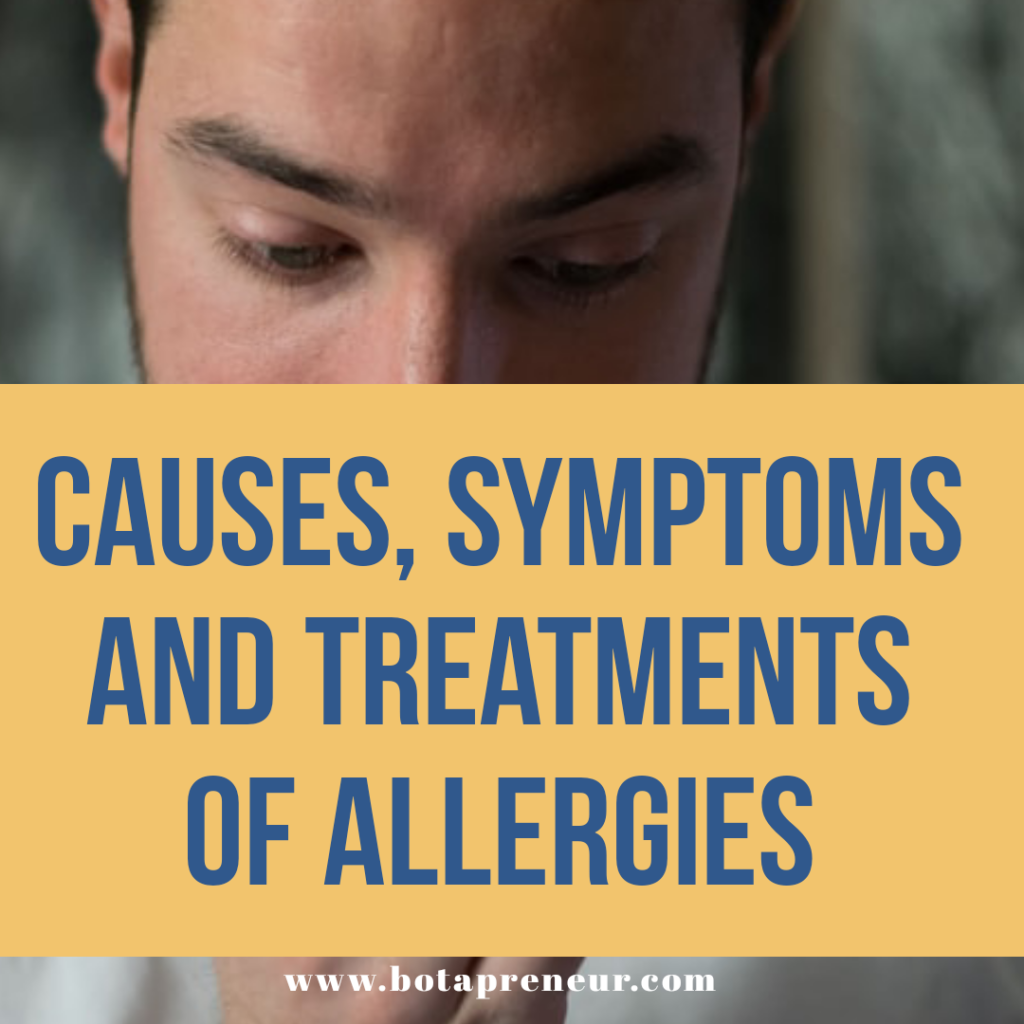There are 100 million allergy-related Google searches a year and hundreds of Facebook pages dedicated to the subject. Allergies are frustrating, restrictive and sometimes frightening conditions and they seem to be rising at an astonishing rate even in developed countries.
Allergies are overreactions of the immune system in response to something that is normally harmless.
Different allergies are distinct conditions, which have different triggers, symptoms – from mild to life-threatening – and treatments, and occur at different rates in the population. Some allergies have similar symptoms to other conditions. Food intolerances, which can be unpleasant but don’t pose the same threats, are often confused with food allergies, which are less common and potentially dangerous. Some people with asthma, eczema and rhinitis are allergic, while others are not.
Allergies can be seen in almost every organ, most commonly in the skin and the mucous membranes. Allergology is the science regarding allergic diseases and their differential diagnoses and mechanisms.
The term “Allergy” was first coined on July 24, 1906 as “specifically altered reactivity of the organism. Allergy is not a disease itself, but a mechanism leading to disease. In clinical practice, allergy manifests in form of various different conditions such as anaphylaxis, urticaria, angioedema, allergic rhino-conjunctivitis, allergic asthma, serum sickness, allergic vasculitis, hypersensitivity pneumonitis, atopic dermatitis (eczema), contact dermatitis and granulomatous reactions, as well as the colourful spectrum of food- or drug – induced hypersensitivity reactions.
For most people with allergies, the first exposure to an allergen prompts their immune system to produce an antibody called immunoglobulin E (IgE). With each subsequent exposure, their body produces more IgE, which attaches itself to two types of cells in the body – mast cells and basophils. When the allergen attaches to the IgE, the mast cells and basophils are activated to release histamine and other chemicals to defend against the allergen “invader.” The release of these chemicals causes allergic reactions, as the person’s body attempts to rid itself of the allergen “invader.”
Common allergies include those to food and airborne allergens such as pollen, mold, dust mites and animal dander, urine and saliva. Allergies can be seasonal, like pollen or certain molds, or year-round, like dust mites. Different types of allergens are more prevalent in different parts of the country or the world.
CAUSES OF ALLERGIES
1) Genetic Disposition: Some people have a genetic tendency towards developing allergies. This is called atopy and is why being allergic can run in families. However, being atopic does not guarantee an allergy will develop, it just means it is more likely. Atopic family members frequently have different kinds of allergies to each other. Identical twins are more likely to have the same allergies. Genetic factors have a role but can’t help us predict exactly who will develop an allergy.
2) Exposure To Allergens: The case of exposure to allergens as a cause of allergy is even more complex. Sometimes exposure to an allergen helps reduce the risk of developing an allergy to it but sometimes exposure to an allergen brings on an allergy. Prolonged exposure to workplace materials such as flour, tobacco dust or the dander of animals can lead to the development of allergic conditions including occupational asthma. Occupational exposure can also give rise to contact allergies to substances such as latex in rubber gloves.
DIAGNOSIS
There is no one allergy test that can alone diagnose an allergy. Each of the diagnostic stages above need to be carried out under the care of a medical professional in conjunction with a face-to-face consultation because results from the tests must be considered in the context of the patient’s medical history.
Applied kinesiology looks for muscle weakness after test substances are placed in the patient’s mouth or hands. Muscle weakness has no relationship to whether the patient is allergic to the substance. In fact, results of kinesiology tests are heavily influenced by the tester.
Cytotoxic tests (ALCAT, FACT, Bryan’s test) expose a person’s blood sample to test substances. The reaction of the white blood cells is observed. But the reaction of blood cells is the same in people with and without allergies.
Food-specific IgG testing (food intolerance test, YorkTest, Hemocode) looks for specific IgG antibodies against food stuffs in the blood. IgG antibodies are part of the immune system with a key role in fighting infections but the best medical evidence has shown elevated IgG levels do not suggest an allergy. Results are frequently positive in individuals who do not have an allergy or a food intolerance.
Hair testing in most cases uses electro-acupuncture to look at the electromagnetic resonance of a lock of hair. Hair is not involved in allergic reactions so testing hair samples cannot provide any useful information on allergic status.
Nambudripad’s Allergy Elimination Techniques (NAET) is based on the idea that allergies are cause by ‘energy blockage’ and can be diagnosed by muscle testing and cured by acupuncture. There is no credible evidence that this technique can diagnose or treat allergy.
Vega test combines acupuncture and homeopathy theory and measures electronic resistance across the skin at various points. The measurements have no relation to allergic status and the test cannot distinguish between people who have an allergy and those who don’t.
TYPES AND SYMPTOMS OF ALLERGY
a) Airborne Allergies
Airborne allergies can range from seasonal annoyances to year-round problems in the form of allergic rhinitis (symptoms of the nose and throat) and/or allergic conjunctivitis (symptoms of the eyes). Airborne allergy symptoms include:
Sneezing Itchy nose/throat
Nasal congestion
Coughing
Itchy, watery and/or red eyes
Dark circles around eyes
Common airborne allergies include; Dust, Pollen, Mold, Pet dander, saliva and urine
b) Food Allergies
Severity and development of food allergies depend on the quantity of the food eaten, the amount of exposure an individual has had, and the child’s sensitivity to the food. Food allergies are usually not lifelong, with the exception of certain peanut, tree nut and seafood allergies.
In rare instances, a child may develop a life threatening condition called anaphylactic shock. Severe symptoms or reactions to any allergen require immediate medical attention.
Food allergy symptoms include:
Itchy mouth and throat
Rash
Cramping
Nausea
Vomiting
Diarrhea
Hives
Runny/itchy nose
Shortness of breath
Common food allergies include; Cow’s milk, Soy, Egg, Wheat, Seafood, Tree nuts (eg. walnuts and pistachios), Peanuts.

HOW ARE ALLERGIES TREATED?
While there is no cure for allergies, relief of symptoms is possible. Reducing or eliminating exposure to allergens is usually the most effective.
1) Medications: Medications used to treat allergies include:
Antihistamines block histamine release from mast cells, reducing symptoms. Non-sedating antihistamine tablets are available from pharmacies without a prescription. Antihistamine nasal and eye sprays can also be used.
2) Intranasal corticosteroid nasal sprays (INCS) are also effective for treatment of moderate to severe allergic rhinitis when used correctly. A prescription may be required for stronger dose INCS.
Combination therapies (INCS and antihistamine) are used for treatment of moderate to severe allergic rhinitis, and offer the advantages of both medications.
3) Medicated eye drops can be helpful in some cases.
4) Adrenaline (epinephrine) is used for first aid emergency treatment of life threatening severe allergic reactions (anaphylaxis). Adrenaline is usually given using an adrenaline autoinjector that can be given without medical training.
5) Non-medicated treatments such as saline sprays are used for treating allergic rhinitis and sinusitis.
6) Allergen immunotherapy (also known as desensitisation) is a long-term treatment which changes the immune system’s response to allergens. It involves the administration of regular, gradually increasing amounts of allergen extracts, by injections or by sublingual tablets, sprays or drops.
A discussion in the Babes of Unique Dynamite Family by Jenny Ighalo


I don’t think the title of your article matches the content lol. Just kidding, mainly because I had some doubts after reading the article.
Your point of view caught my eye and was very interesting. Thanks. I have a question for you.
Thank you for your sharing. I am worried that I lack creative ideas. It is your article that makes me full of hope. Thank you. But, I have a question, can you help me?